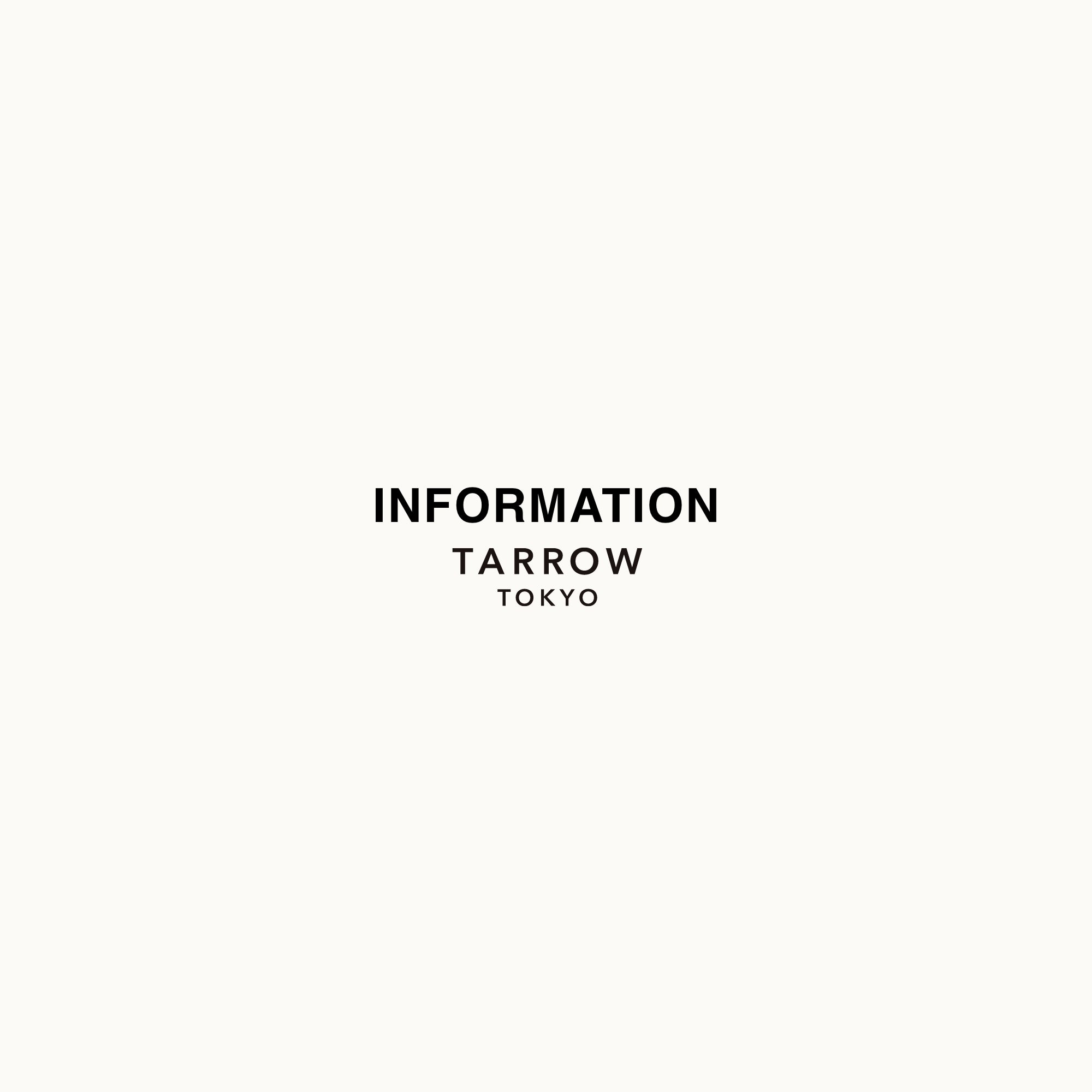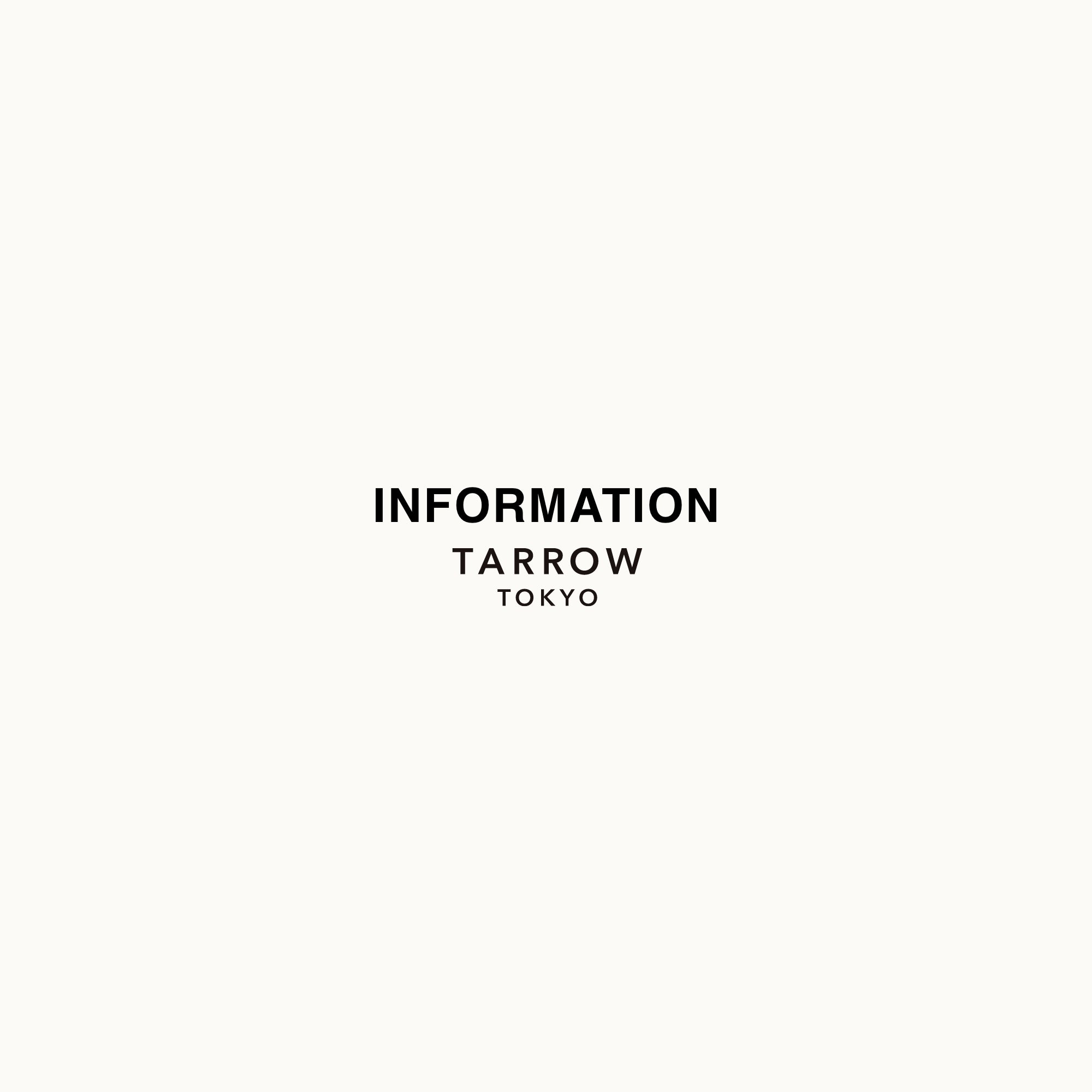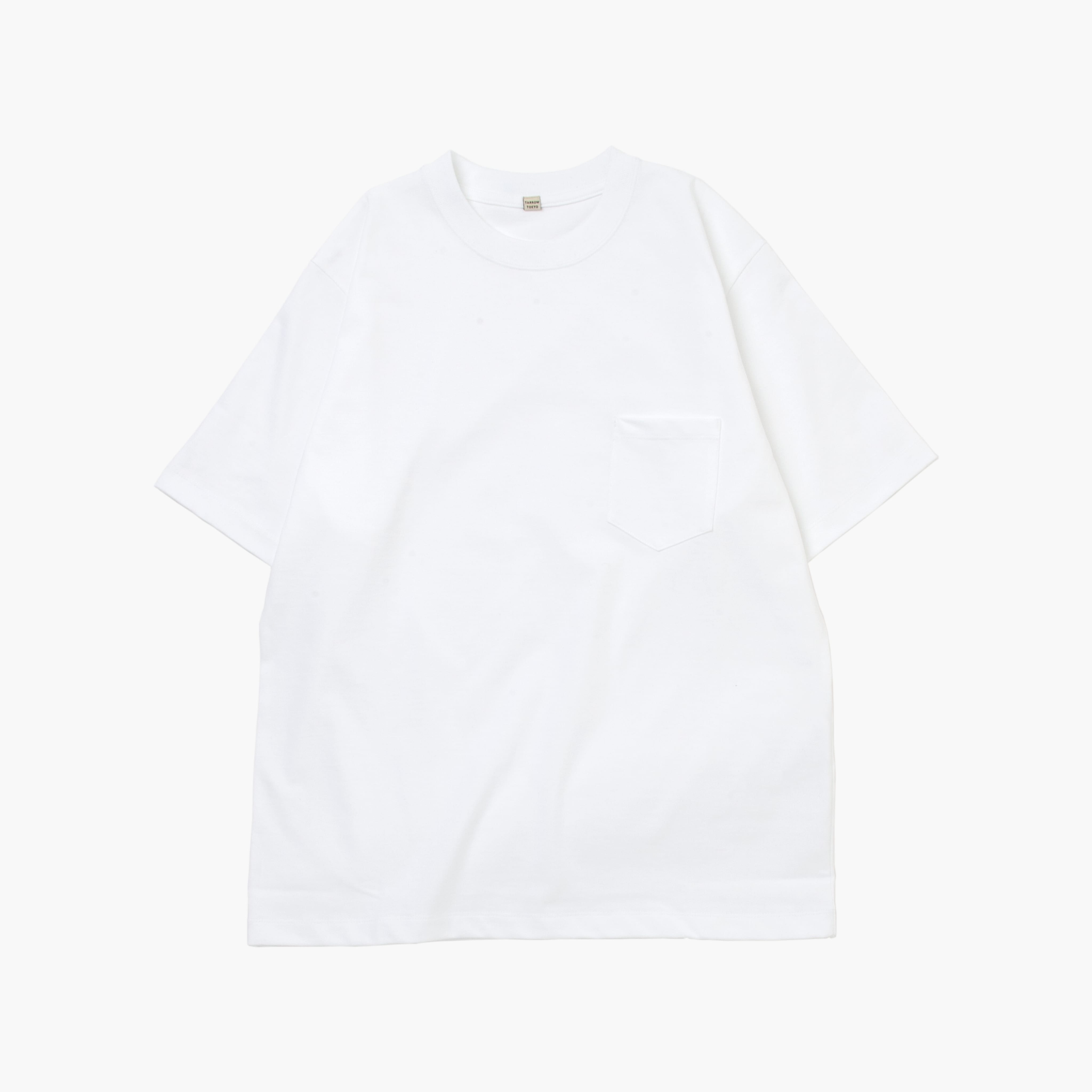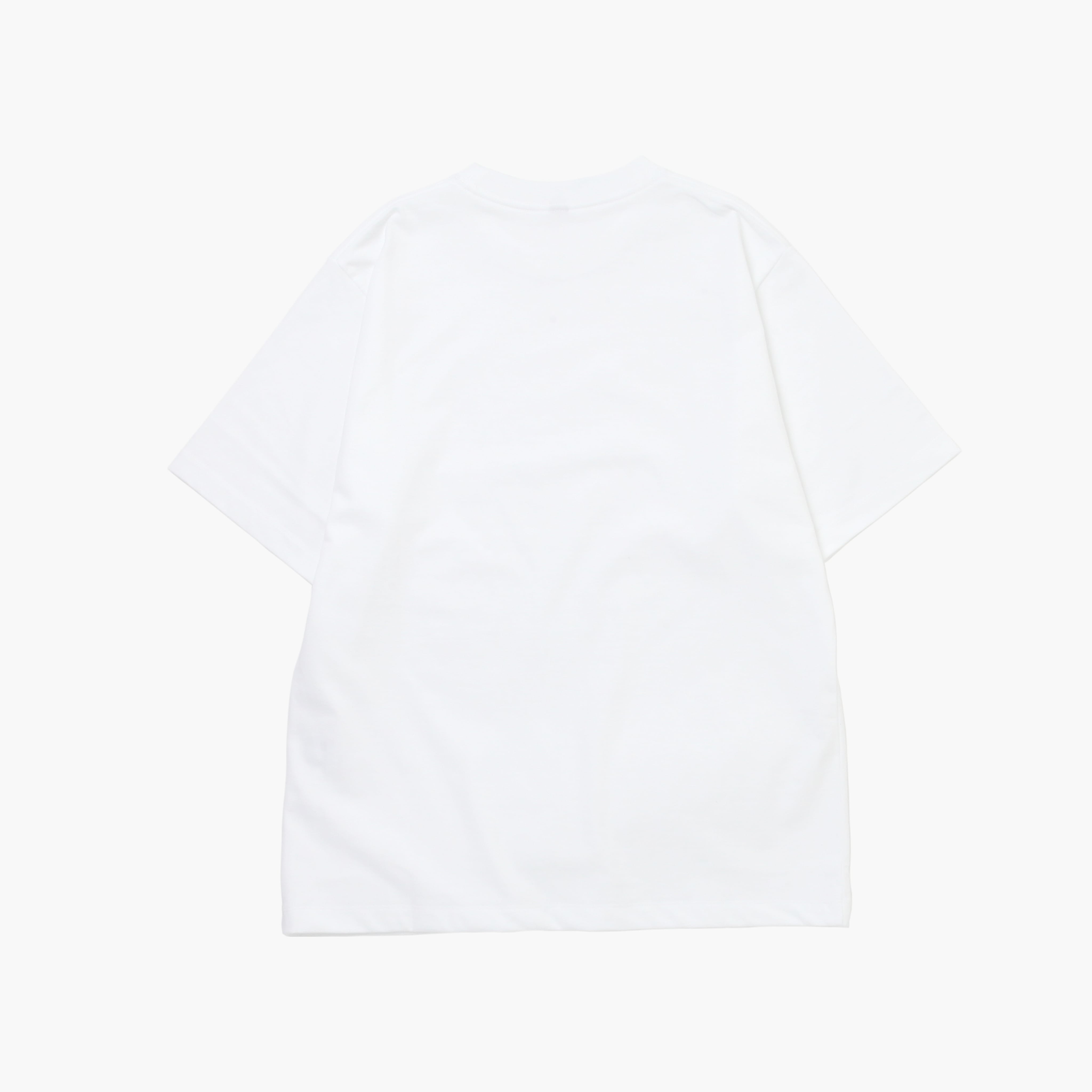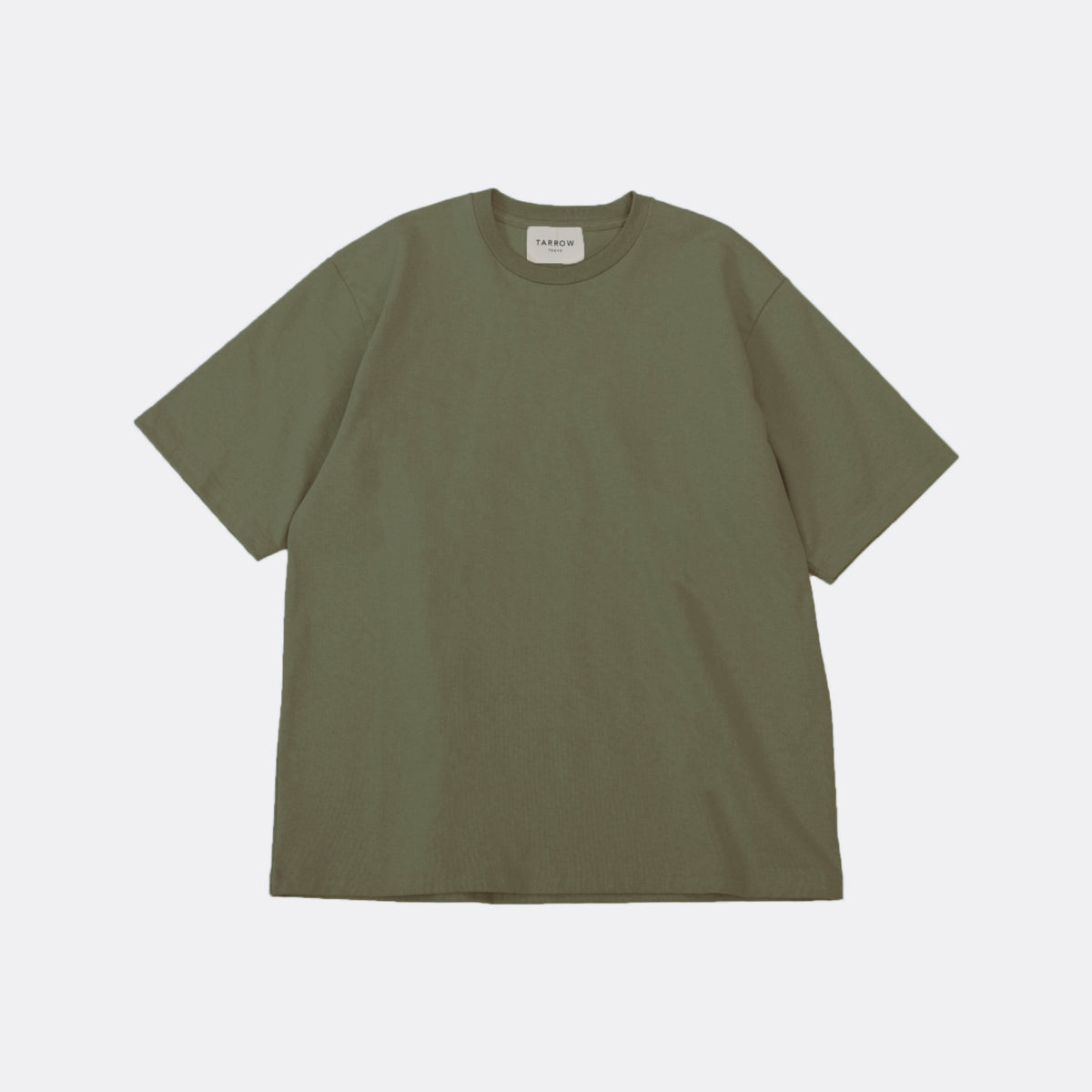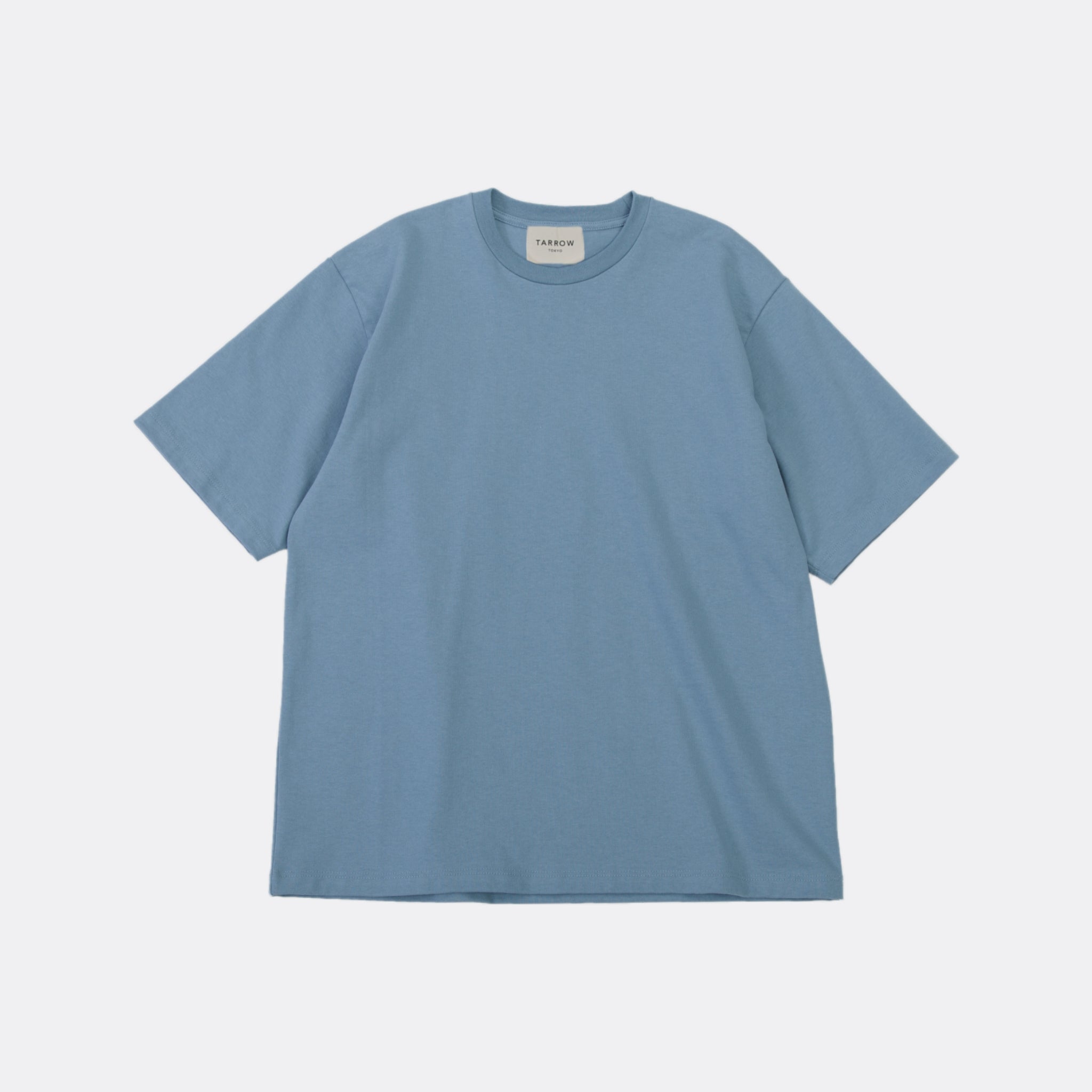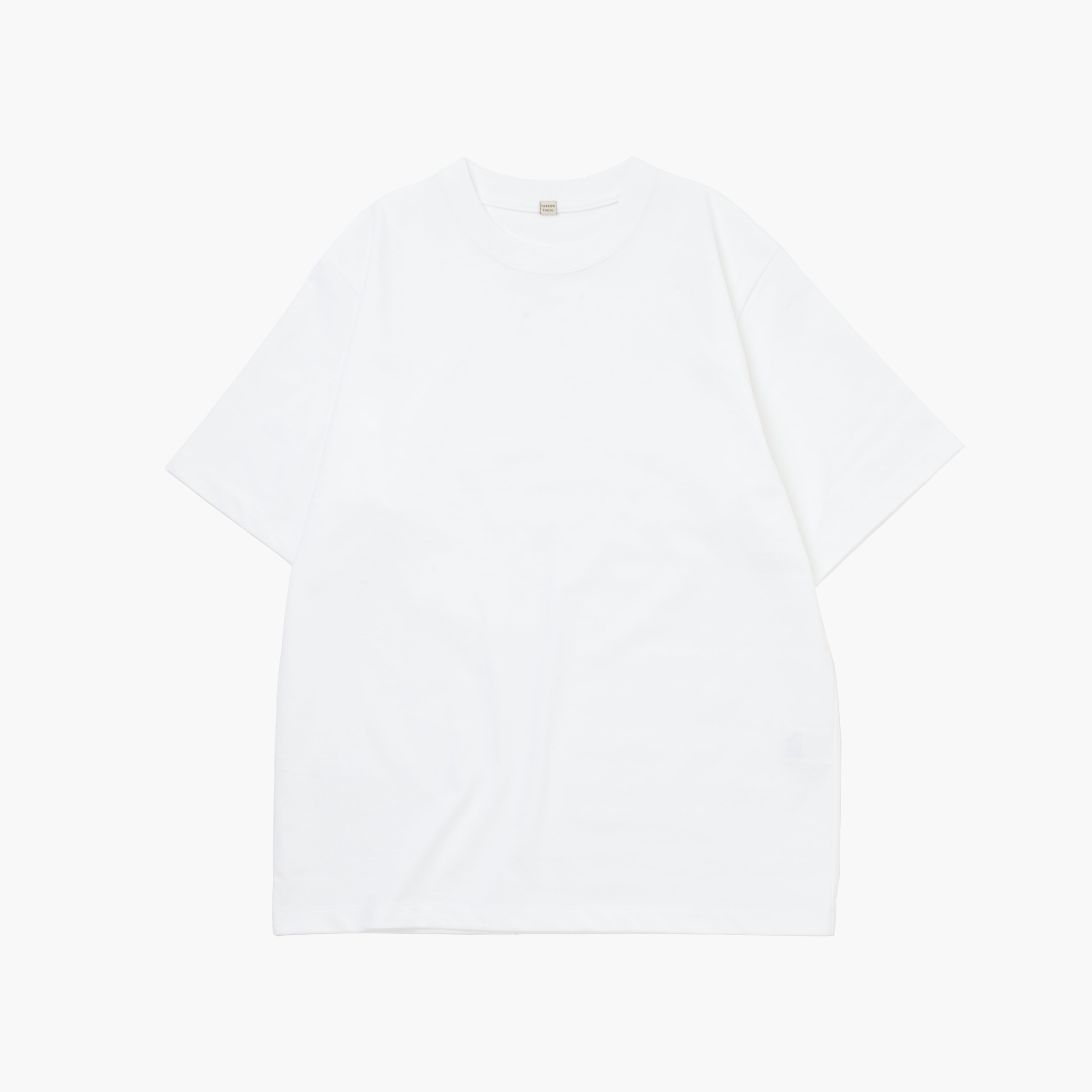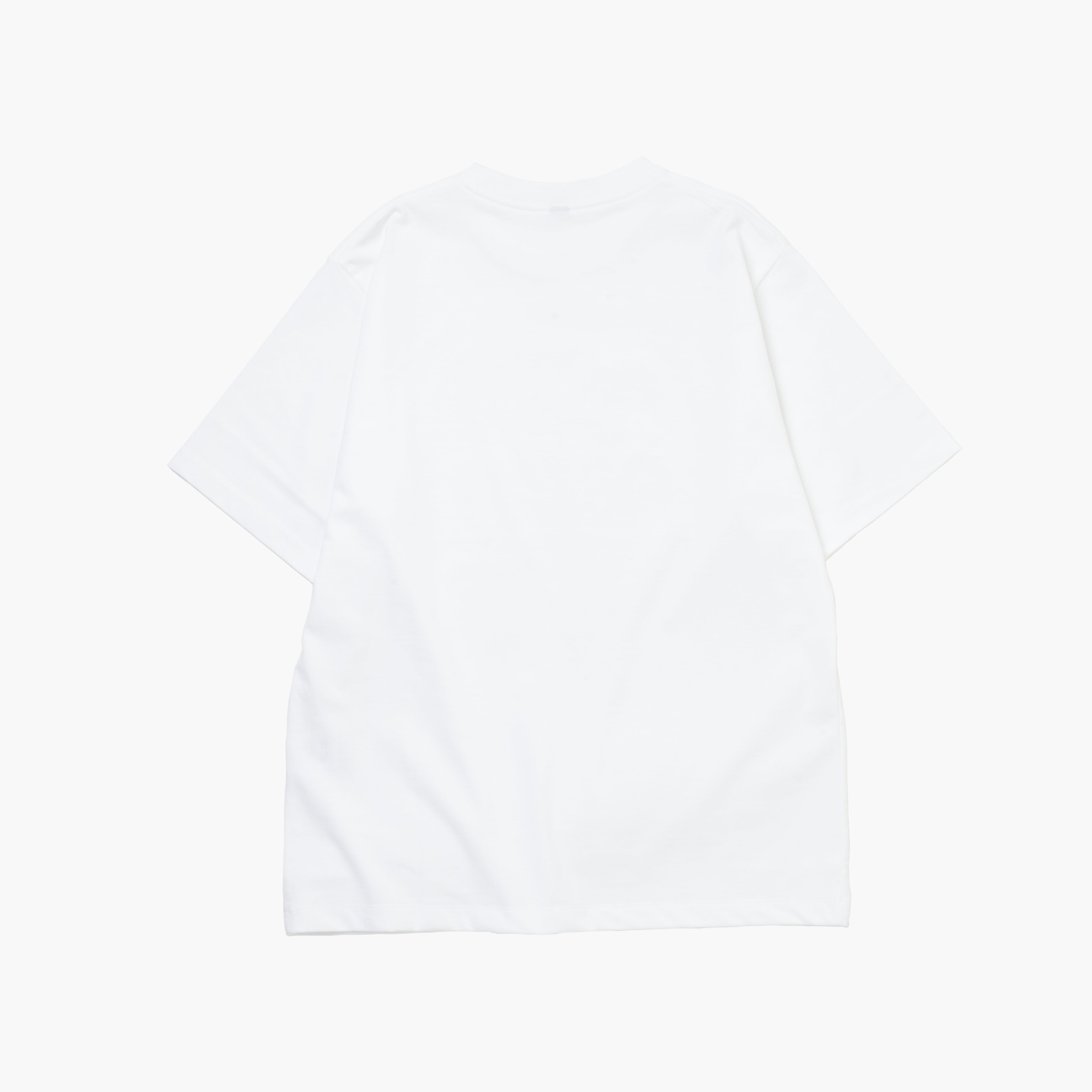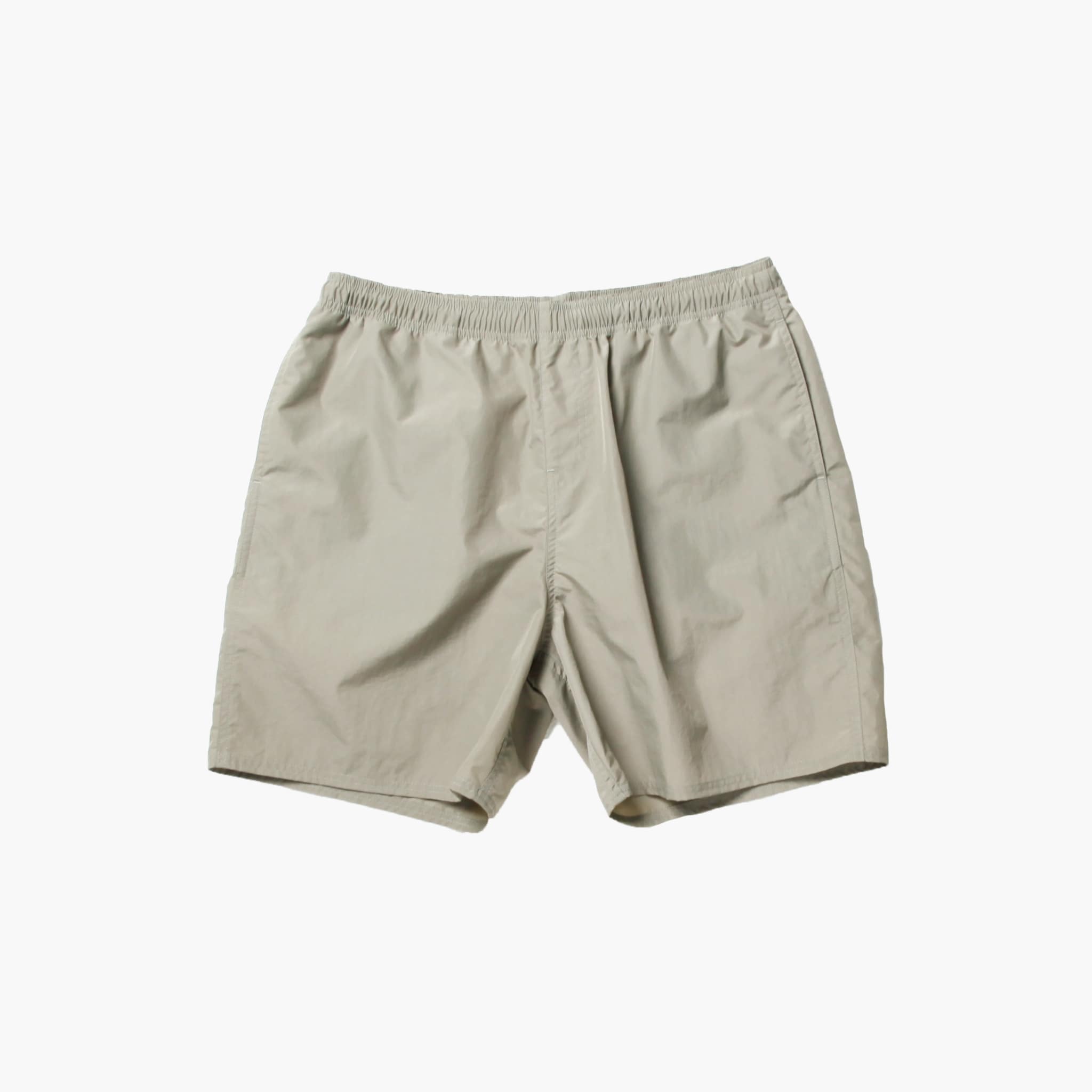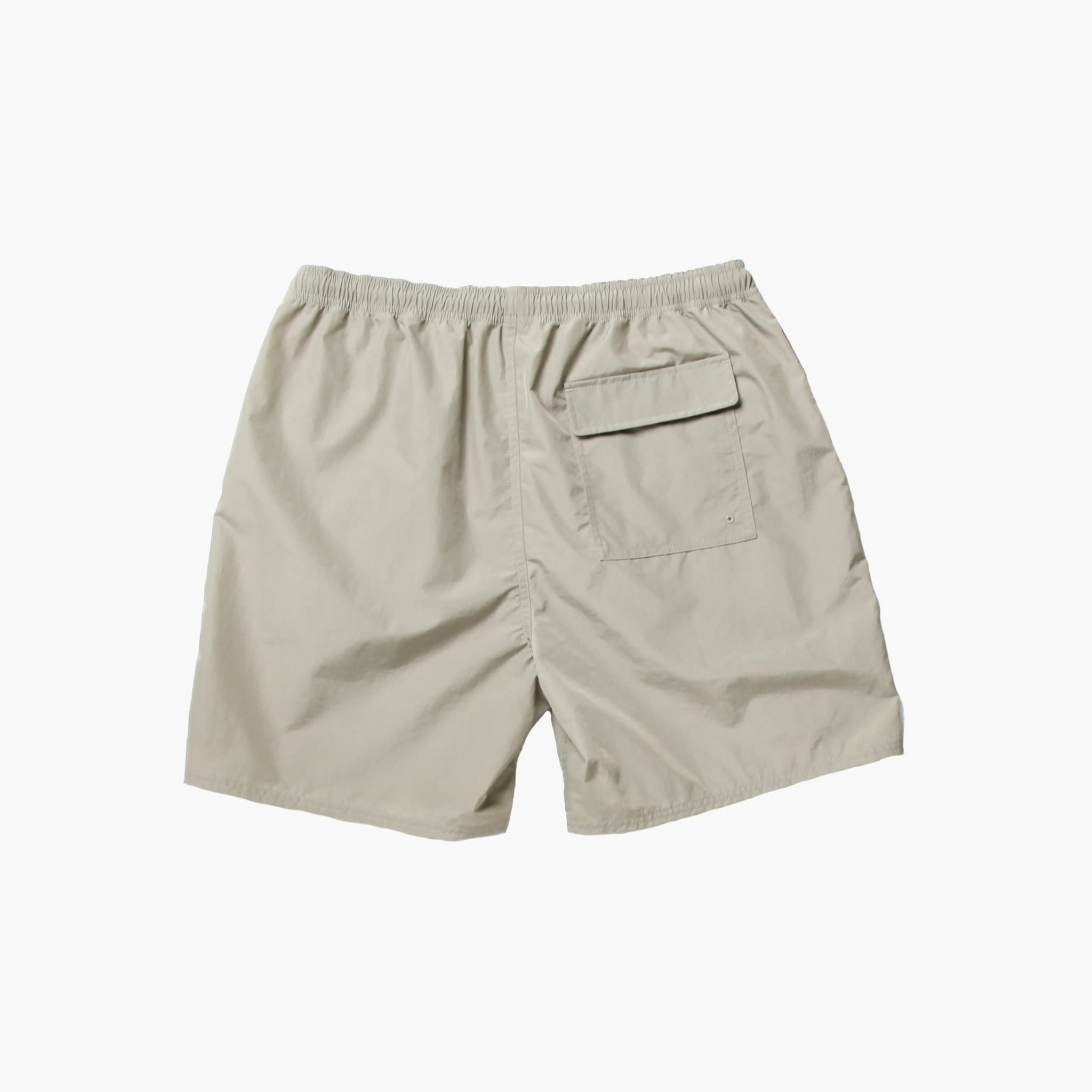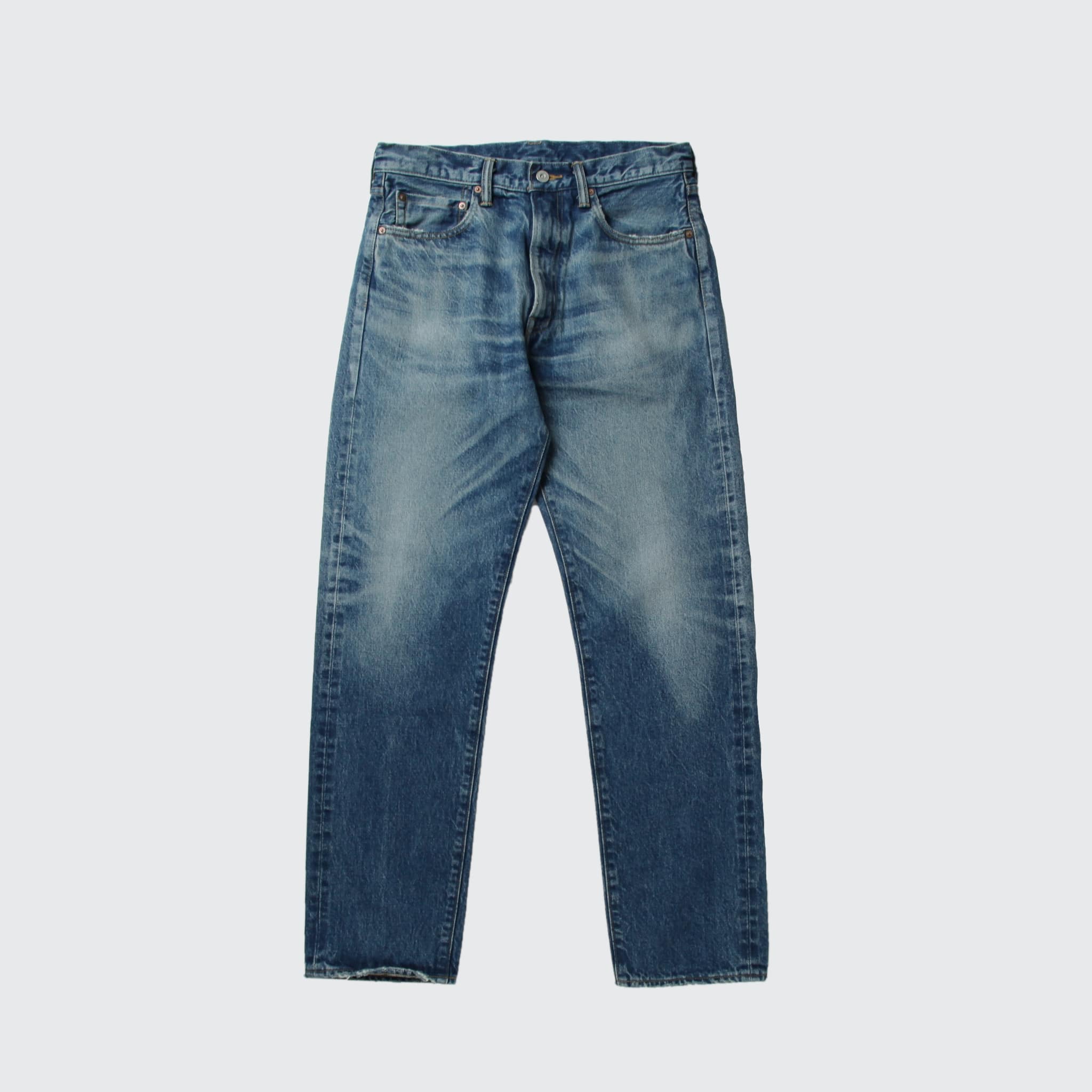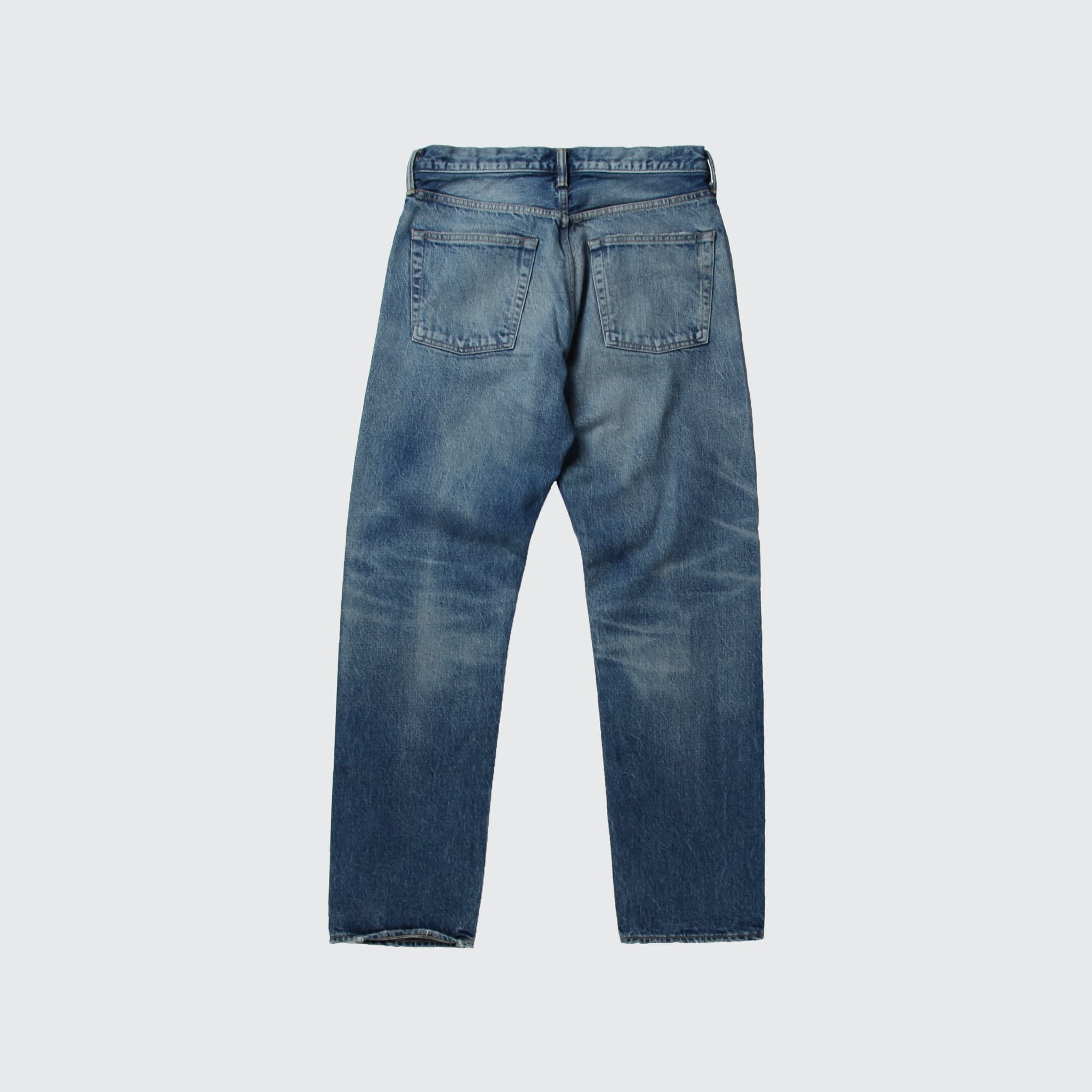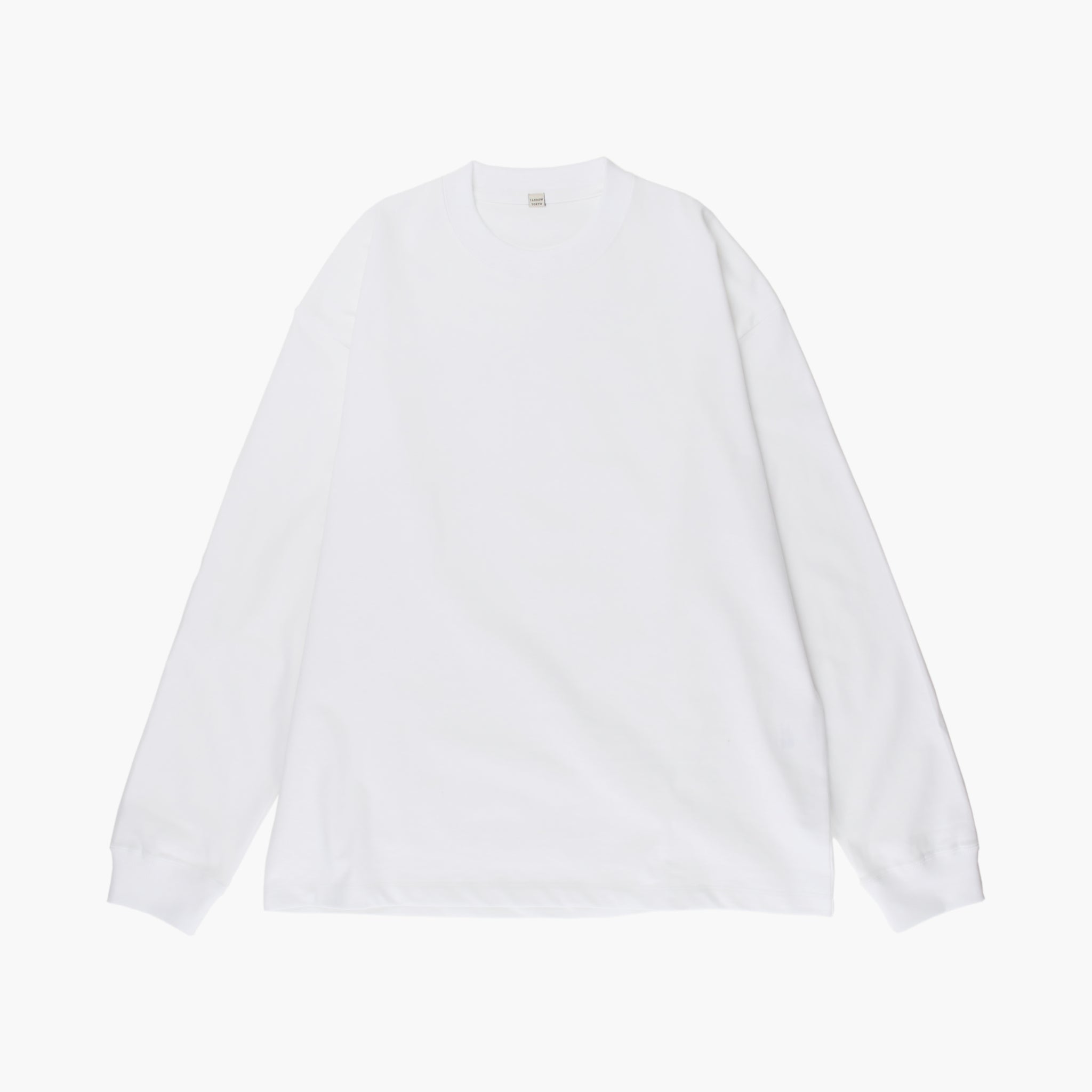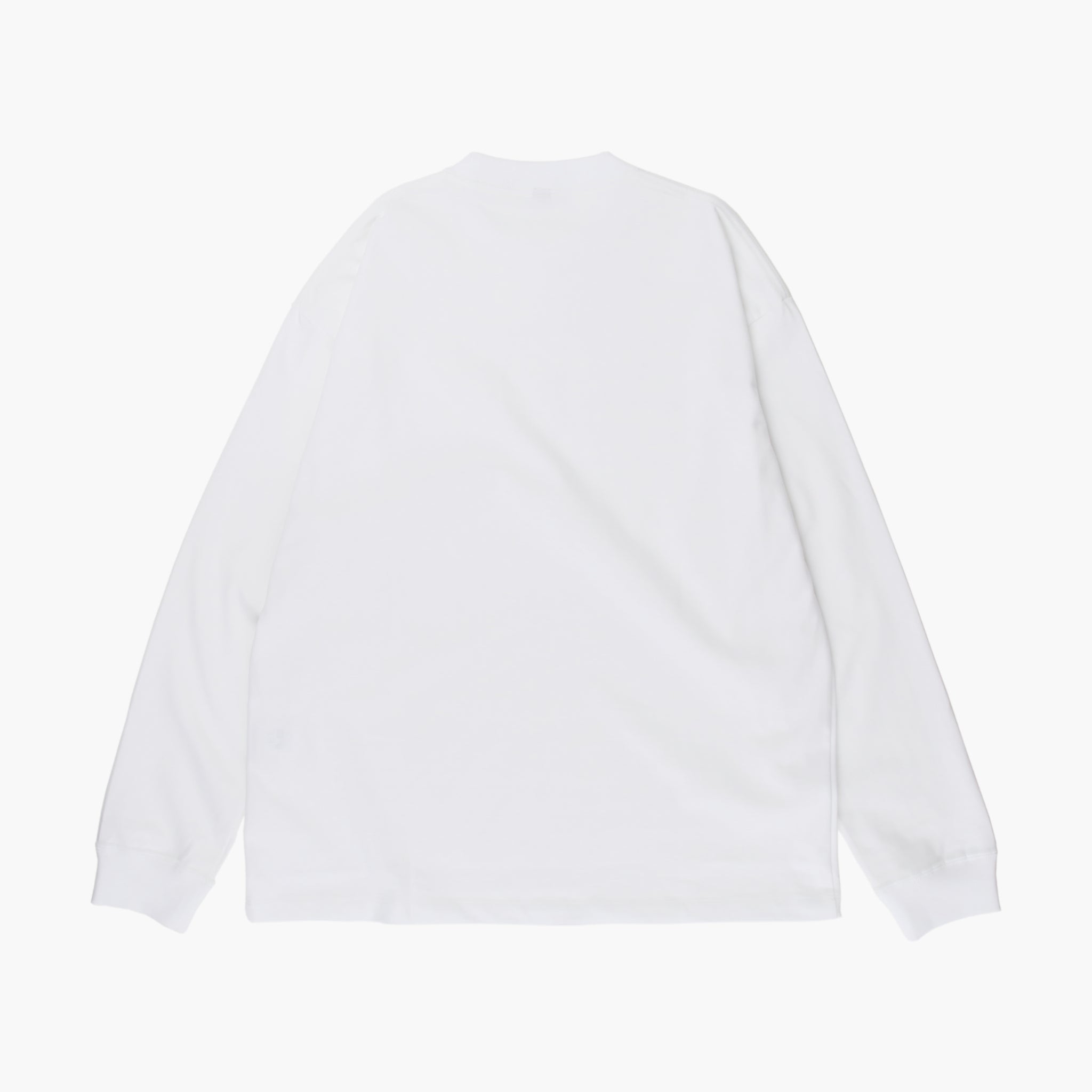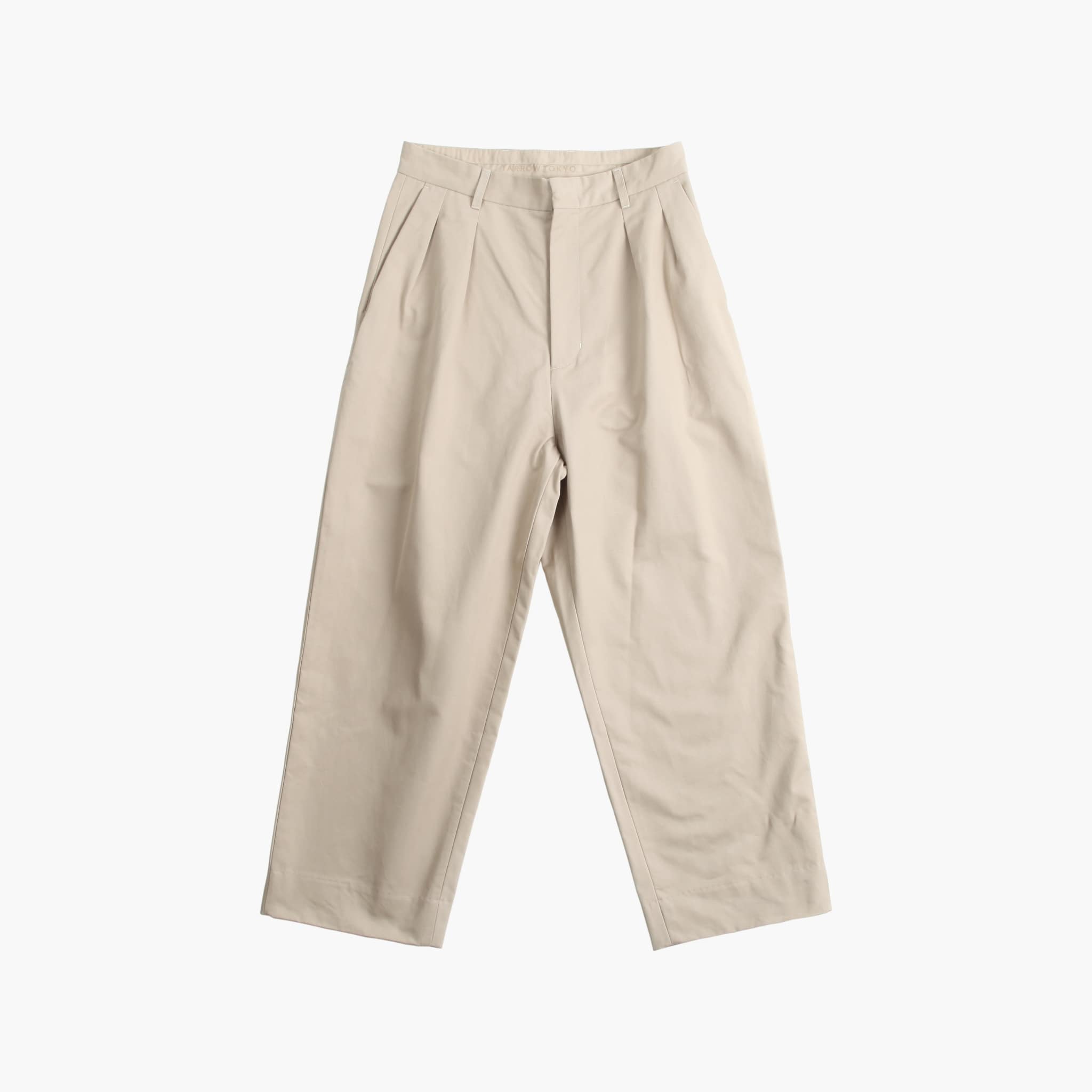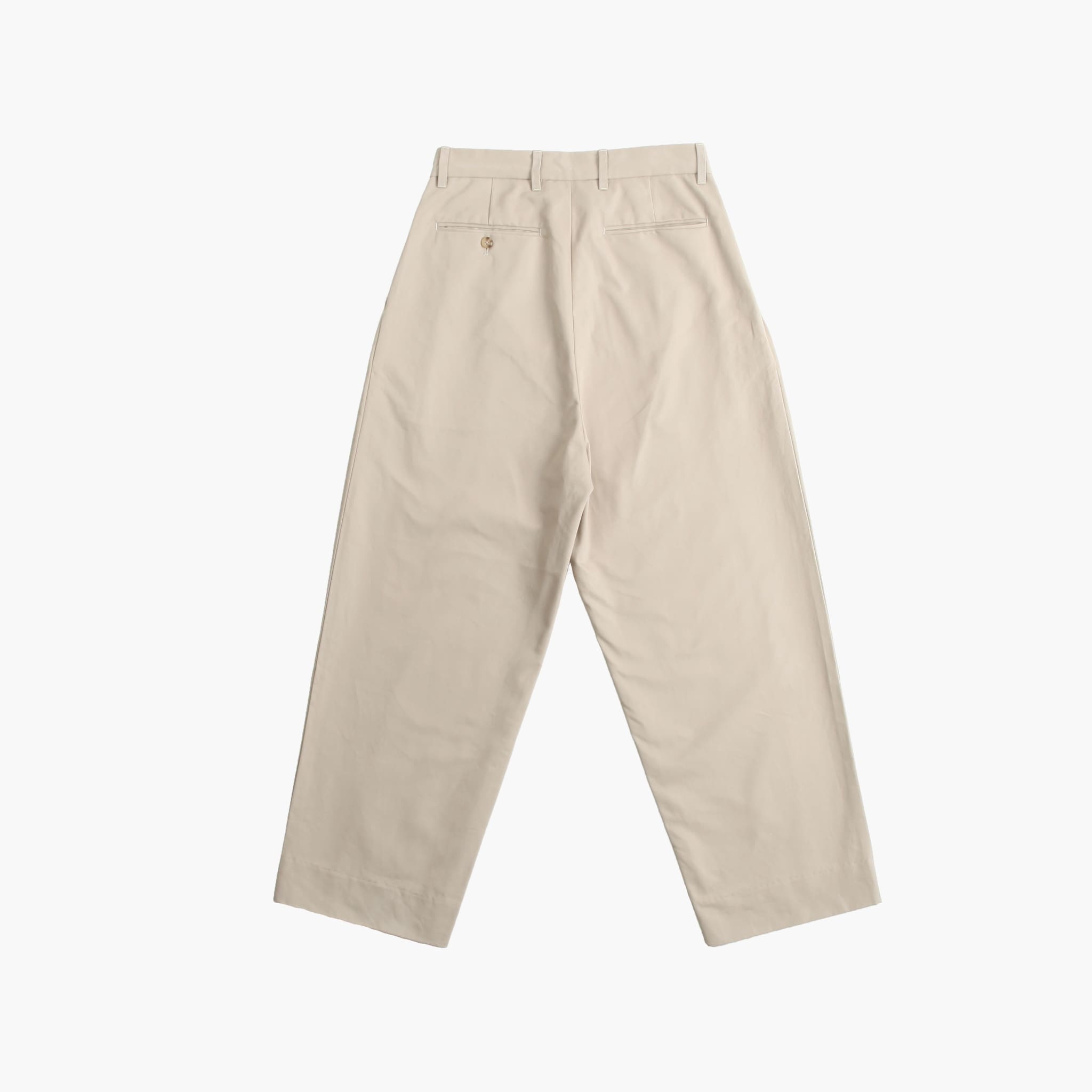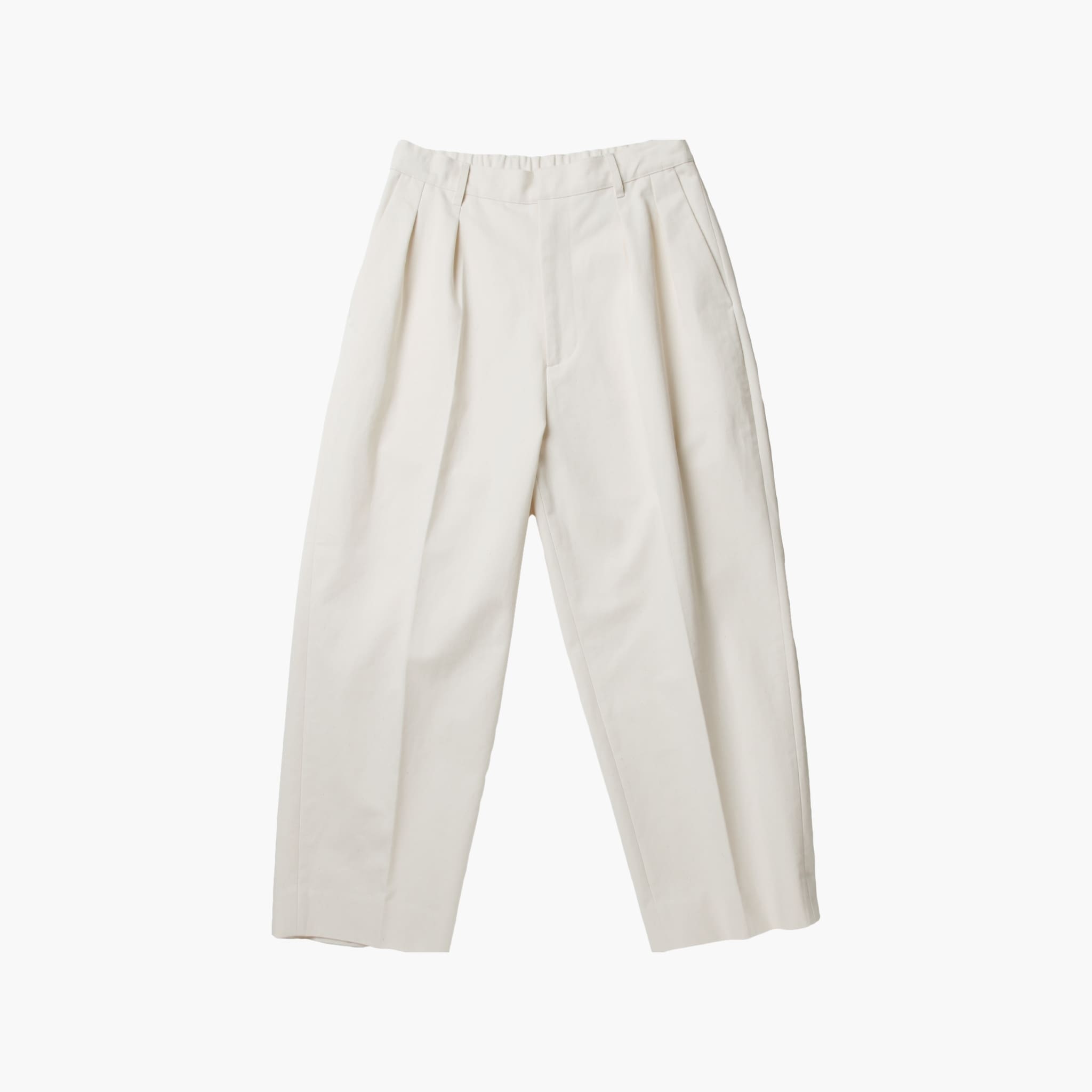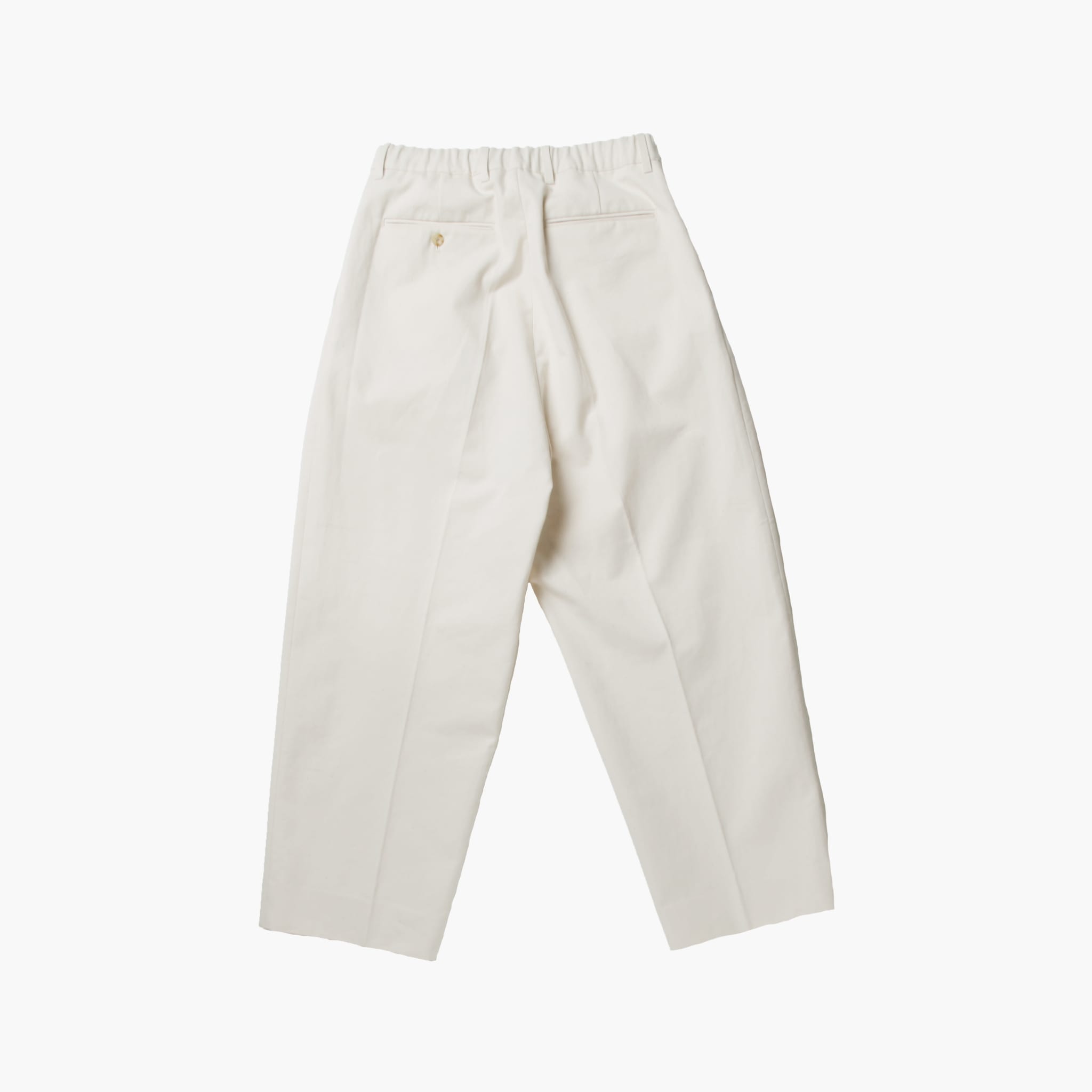
Carefully from the beginning, little by little. First of all, I want you to pick up a T-shirt.
◯ What is TARROW TOKYO?
(1) Why did you start TARROW TOKYO?
Yui , Kusaba :
It's been more than 20 years since we first graduated and joined the textile division of a trading company . We had talked since we were young about how it would be nice to work together someday , regardless of the company we worked for . After that, we both left the company and I worked in the textile industry, while Kusaba worked in the PR industry, both serving as representatives . During this time, we came up with Taro's brand concept of " I want to create a world where good clothes are cherished and worn for a long time . " To put it simply, we make clothes that we " want to wear ourselves " and " want to buy ourselves . "
Yui:
Trading companies and OEM companies like ours blindly produce the clothes that their main clients , the major apparel companies , want. With apparel companies engaged in fierce price competition , the result has been an industry in which low-cost goods are mass-produced and consumed .
Although the market size of the domestic apparel industry has declined by nearly 30% over the past 30 years, the number of clothes sold has nearly doubled . Conversely , the retail price of one piece of clothing has fallen from 6,848 yen in 1990 to 3,202 yen in 2019, more than half of what it was before .

Major apparel companies generally do not have their own factories , and focus on product planning and sales (store management) . For production, they have relied heavily on trading companies and OEMs like us . For a long time, the division of labor was such that the apparel side was responsible for product planning and sales, while we were responsible for production . As a result, manufacturing know- how has been accumulated by trading companies and OEMs .
However , in recent years , it has become more common for major apparel companies to go directly to factories , make their own products , and sell them themselves . As major SPA apparel companies have grown rapidly , the entire industry has shifted to mass production at low cost , and today's sales floors are filled with standardized products, including those made from the same materials and designed . Small brands that once planned and manufactured products with a focus on quality and design have also been swept away by the wave of low-cost mass production, and many have disappeared over the past decade.
In other words, the current system of division of labor is beginning to crumble.
Kusaba:
I remember when I talked with Yui long before we launched TARROW TOKYO , he said, "There are very few clothes that we make for work that we would want to buy and wear in our own store . " "Yui will do the production and I will do the marketing, so let 's make clothes that we would want to buy and wear in our own store and sell them directly to consumers !" That's how TARROW TOKYO was launched .

(2) Brand concept : “We want to create a world where good clothes are cherished and worn for a long time.”
What are your thoughts behind the unique brand story of Red Demons and Blue Demons ?
Kusaba:
The red demons are the people who mass -produce clothes , and the blue demons are the people who mass-consume the clothes that are mass-produced . The brand story is based on the motif of Momotaro's demon slaying . It 's not just that those who mass- produce cheap clothes are at fault, but it also serves as a warning to those who prefer to buy such clothes and tell them to wait a moment . The use of the word "demon" itself may be extreme, and it seems like I'm picking a fight with the existing apparel industry , but is it really okay to say it this far ? (laughs)
Yui:
I wanted to express my desire to offer consumers another new clothing option . I have no intention of overturning the business model currently being developed by major SPA apparel companies, and as long as there is consumer demand, there is no doubt that they will remain. I know that calling them demonic is an exaggeration , but I think that there are quite a few people who feel the same way, even if they don't call themselves demonic ( laughs ) .
If we are going to do everything from planning, design to manufacturing , we want to value making " things that we believe are the best and most suitable " regardless of whether they are made in Japan or overseas . If you make things based on cost (sales price) , quality will be sacrificed. At TARROW TOKYO , we make things with quality in mind first .

( 3 ) What is good clothing?
Yui:
If we compare the current apparel industry to a sushi restaurant, the two extremes of conveyor belt sushi restaurants , where a plate costs 100 yen , and high-end sushi restaurants, where a person costs 30,000 yen , are overwhelmingly dominant. When asked what " good clothes" are, it's difficult for people who don't know much about clothing to answer, isn't it? The taste of conveyor belt sushi and 30,000 yen sushi is completely different, but then what is " good fish " ? It's a pretty difficult question. I think tuna is tuna. The apparel industry is the same. Luxury brands and fast fashion are becoming more polarized . In the past, select shops and department stores were in charge of the mid-price zone , but they are in a difficult situation due to the rise of fast fashion . Since it is difficult to sell in the mid-price range , they lower the price → reduce production costs → a vicious cycle occurs, and as a result, they cannot compete with fast fashion, which is overwhelmingly cost-competitive in terms of production volume .
Kusaba:
Food and drink websites recommended by chefs are gaining popularity . Japanese restaurants frequented by people who are knowledgeable about food, including famous Western chefs . Conversely, you can also find out about French restaurants frequented by famous chefs . We want to go to such restaurants because they are recommended by people who know the taste . If we apply this to the apparel industry, I think it is exactly the people who are doing OEM, the people at the forefront of planning and production . If they say something is good, it must be good. As someone who used to work in the textile industry, I can say that they are people you can trust. If you ask whether ordinary people are buying T-shirts that cost 20,000 yen or 30,000 yen each, the answer is no. I think only people who really like it, only fans of the brand.
Yui:
I've digressed, but good clothes can be properly defined. The cost of production is high , but the quality of the raw materials, thread, and cotton is still good. Sewing factories also have low technical skills, and factories that sew roughly are cheap, and if they sew quickly with an emphasis on speed , the quality will be poor. Factories that sew carefully, one stitch at a time , have a slower production speed, so although the cost is high, the quality is definitely good . However, it is not easy for the average person to instantly tell when purchasing . Taro is not a brand that competes with either luxury brands that cost tens of thousands of yen per piece or fast fashion brands that cost around 1,000 yen per piece . Now that the market is greatly polarized , we need clothes that have a good balance of price and quality in the true sense of the word , or in other words, should we say " good quality mid-price range "? As I talk about various things, I once again feel the difficulty of explaining what we do (laughs). If you don't understand, try wearing a TARROW TOKYO product once (laughs).

( 4 ) Can collaboration between apparel OEMs and digital marketing help us win the battle against fast fashion?
Yui: TARROW 's T-shirts are sold for 3,990 yen, but the cost price is 3,000 yen. Fast fashion companies would like to sell these T-shirts for 1,990 yen, but with a cost price of 3,000 yen, that is simply not possible. Even if we make hundreds of millions of them, this cost will not go down, so it is impossible to sell them for 1,990 yen . We have the experience of having seen many factories, which are the key to manufacturing. We have been doing OEM for 25 years, so I think that one of the strengths of our ability is that we know the strengths and weaknesses of factories we have used in the past . Only OEM can manufacture in good factories and produce good products .
Kusaba:
We are also a PR company , but PR is a method of third-party communication. For example, we can recommend TARROW TOKYO to the world as a client . We can tell people what is good about our client as a third party, but when it comes to our own product, we feel a little embarrassed. It is no longer a third-party communication (laughs).
However, as a PR professional, I would like to sincerely convey the good points of T ARROW TOKYO to the world, to everyone.

( 5 ) Future product development
Yui:
Currently, we have started with a minimum number of unisex items that everyone can wear . As the number of fans increases in the future, their needs will change accordingly.
Kusaba:
I'd like to have a request .
Yui:
We intend to play a long-term , careful game, tailored to the needs of our customers . It may be possible to spend a lot on advertising and promotion , and make 500 million yen in sales next year, or some other junkie sales tactic, if you just pour money into it. But we want to be careful from the beginning, and gradually increase the number of people who come, naturally . Then, we will pick up on those needs and give them back in the form of products, and we will repeat this process. We want it to spread by word of mouth in the true sense of the word. This is the way T ARROW operates.
What makes me happiest right now is when my friends and acquaintances say they want another one . I sell it online, so it makes me really happy when they secretly buy it again in the middle of the night (laughs) .
I think they bought it out of kindness at first, but I think they wanted another one because they realized how good it was. In that sense, I want to make the regular T-shirts in particular without changing the fabric or shape. I want to make sure we have it in stock when people want to buy another one . Up until now, the apparel industry has been about constantly releasing new products to stimulate purchasing desire, but I think it would be good to live in a world where people can buy the same product over and over again, and I want to create products that are worthy of that.
Kusaba:
First of all, we want people to pick up a T-shirt. If they think it's good, then they can move on to the next product. It's okay if you discard items that are a little different in shape. It may be strange to say that we are affordable, but as a brand, we would be pleased if we could see a trend where people can buy a T-shirt right away when they think it looks good , wear it for a long time, and replace it with the same one if it gets damaged.


